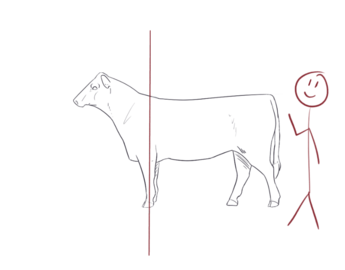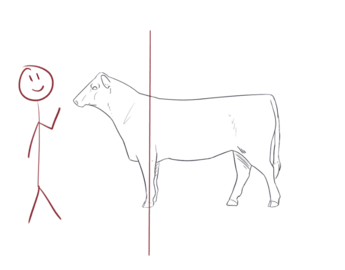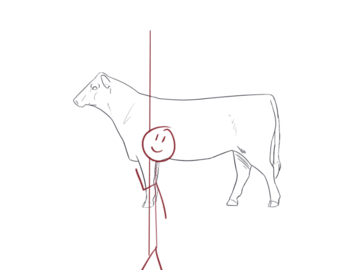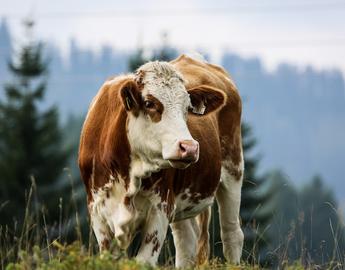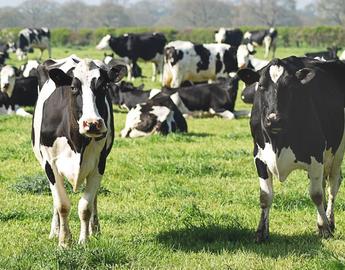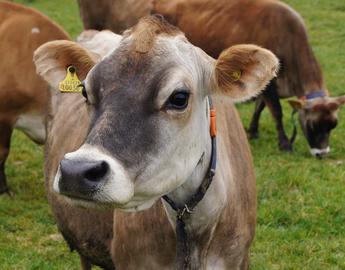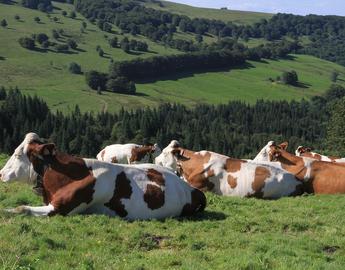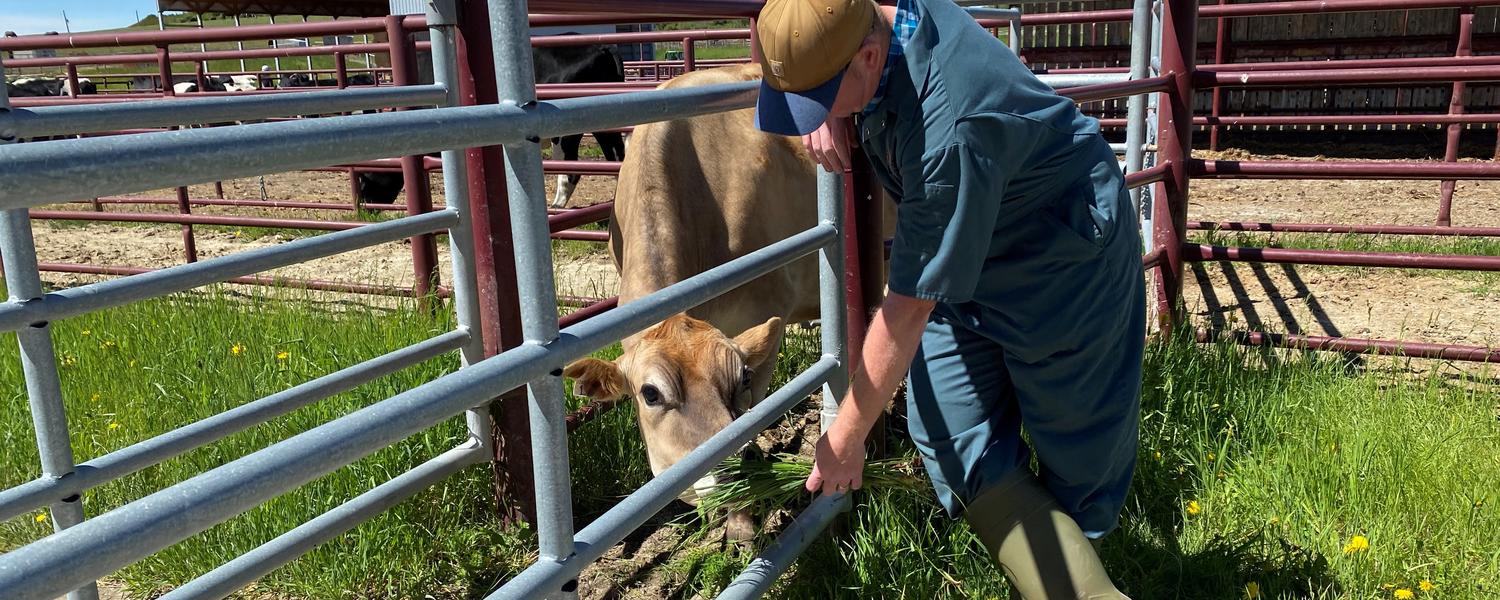
Bovine Interaction

History of Cattle
Cattle are the domesticated descendants of an extinct animal called an Aurochs. Cattle were domesticated two different times and as a result, we have two different species of domestic cattle. One species, Bos indicus, are the types of cattle that are typically kept in really hot climates. The other, Bos taurus, are the types of cattle that are found in more temperate or cold climates like in Canada. There are 3 primary uses for cattle: dairy production, beef production, and as a draft animal. Cattle that are used as draft animals, meaning they pull or haul things, are called oxen. Although oxen are not very popular in North America anymore, they are still used in other parts of the world.

Bovine Terms
Cow – an adult female bovine that has had a calf
Heifer – a female bovine that has not had a calf
Steer – a castrated male bovine
Bull – an adult, uncastrated male bovine
Calf – a young bovine
Bull Calf – a male calf
Heifer Calf – a female calf
Meet our Teaching Herd
Meet a couple of our bovine UCVM herd members! At UCVM we have a herd of mostly holstein cows with a few jersey cows that help the students at UCVM learn. Check out the video below to learn a little bit about the difference between a jersey and holstein cow!
Bovine Handling and Restraint
Bovine Chute System
Cattle are considered herd animals and a prey species. This means that cattle can become very stressed if alone or approached by something they consider a threat, such as a person. In an attempt to decrease the stress of cattle during handling, a chute system was developed. This allows cattle to be handled in a lower stress situation, while also keeping the handler safe. This is a very important system to know how to use as a veterinarian, as you will utilize it during most procedures on cattle.
Bovine Haltering & Restraint
Bovine haltering and unhaltering is an important skill to practice and complete safely. It is important when putting on and taking off a halter that it is done in a specific way to decrease risk of injury. Knowing how to halter and unhalter cattle allows for procedures on the head or neck to be done safely.
Knowing how to correctly tie a knot is a really important skill in veterinary medicine. Learn how to tie a double half hitch knot and a quick release knot in the video below! Both of these knots are important for being able to restrain and treat cattle in a safe manner.
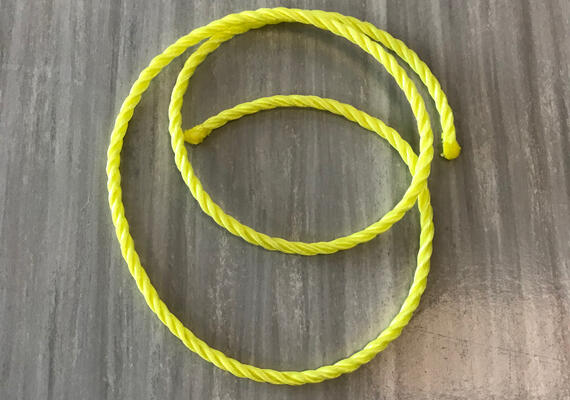
TIE A BOVINE SLIP KNOT
To practice the above bovine slip knot and half hitch knot you will need some rope from your swag bag! The rope that we recommend using for this activity is yellow. Please see the image to the right for reference.
To practice these knots you can practice tying your rope around chair/table legs or fence posts.
Enjoy practicing your bovine knots!
Bovine Handling: Hind End
Learn different handling techniques to help increase safety when working on the hind end of cattle. Learn when to complete a tail twist, tail jack and how to correctly use a bar in a chute. Also see how a pulse can be taken on a bovid in the video below.
Moving Cattle

FLIGHT ZONES
We can herd cattle and move them around by making use of their flight zones. The flight zone is an imaginary circle around the animal that if you enter it, the animal will try to move away until you are out of the circle again. This is part of a natural prey response. The size of an animal’s flight zone varies between individuals and can depend on things like species and previous exposure to humans. For example, a deer is going to have a much larger flight zone than a dairy cow. We also imagine that there is a line coming out straight from the animal’s shoulders. We call this line the point of balance. The point of balance can be used to manipulate the direction and speed the animal is moving in. By using our knowledge of an animal's flight zone we can move and herd cattle where we want them!
Bovine Physical Exam
Physical Exam
Physical exams are one of the most important skills in veterinary medicine. It is important to understand how to complete a physical exam on cattle as there are many species differences, such as listening to rumen contractions, that must be considered in veterinary medicine. Learn some of the critical skills needed to complete a physical exam on a bovid in the video below.
Learn from Dr. Atkins, a Bovine Veterinarian!
Dr. Atkins, a now retired dairy veterinarian will teach you about the digestive system of cattle, show you how to correctly open the mouth of a bovid, and will walk you through how to complete one of the most important portions of a physical exam: the distant exam. The distant exam is critical in herd animals, as they are very good at hiding that something is wrong with them. Being able to notice subtle abnormalities will lead to providing these animals with care faster!
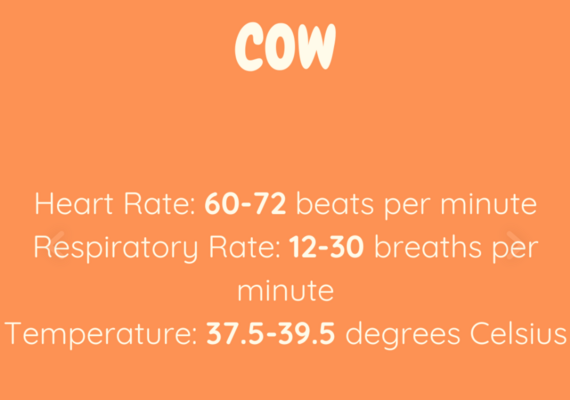
Bovine Vitals
You have now learned that during small animal and equine physical exams, we collect vitals and compare them to reference ranges! Look at the image on the right to see the references ranges for vitals in cattle!
Bovine Rectal Palpation
In order to determine whether or not a cow is pregnant or ready to get pregnant, veterinarians are able to palpate the female reproductive system rectally. This is a very important skill! Watch the video to learn more about the importance of and the technique of bovine rectal palpations.
* WARNING - DO NOT TRY THIS AT HOME IF YOU HAVE CATTLE * This video is for educational and theory purposes only!
In your swag bags you will find 2 rectal palpation gloves! These gloves are just for fun and to show you that they go all the way to our shoulders!

